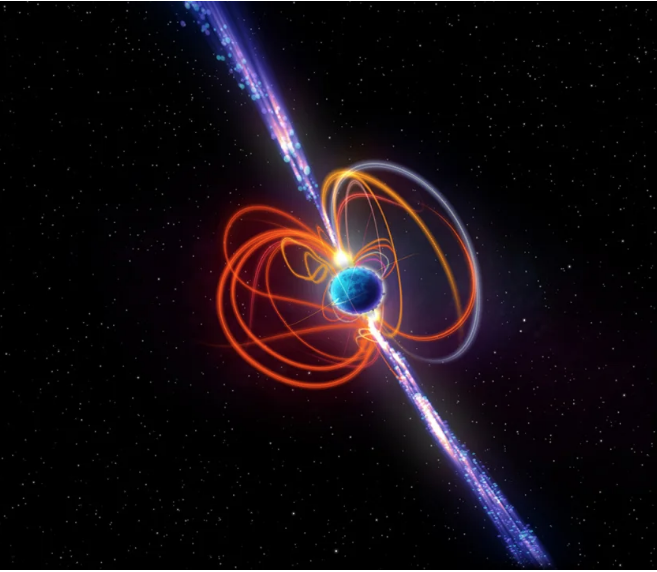An unusual object has been releasing pulses of radio waves in space for decades. Astronomers just discovered it
by Admin

Astronomers have discovered a new type of stellar object that could change their understanding of extreme celestial bodies in the universe.
Initially, Curtin University doctoral student Tyrone O’Doherty spotted a spinning celestial space object in March 2018. The unfamiliar object released giant bursts of energy and beamed out radiation three times per hour.
In those moments, it became the brightest source of radio waves viewable from Earth through radio telescopes, acting like a celestial lighthouse.
Researchers thought the phenomenon might be a remnant of a collapsed star — either a dense neutron star or a dead white dwarf star — with a strong magnetic field. Or perhaps the object was something else entirely.
After releasing a study describing the observation in January 2022, O’Doherty and a team of astronomers at the Curtin University node of the International Centre for Radio Astronomy Research, or ICRAR, in Australia began to search for another example.
“We were stumped,” said Dr. Natasha Hurley-Walker, senior lecturer at the Curtin University node of ICRAR, in a statement. “So we started searching for similar objects to find out if it was an isolated event or just the tip of the iceberg.”
The team observed the sky using the Murchison Widefield Array, a radio telescope on Wajarri Yamaji Country in outback Western Australia, between July and September 2022.
The scientists discovered an object 15,000 light-years from Earth in the Scutum constellation. The object, dubbed GPM J1839−10, released radio waves every 22 minutes. The bursts of energy lasted up to five minutes.
Astronomers believe it could be a magnetar, or a rare type of star with extremely strong magnetic fields that is capable of releasing powerful, energetic bursts. But if the object is a magnetar, it defies description because all known magnetars release energy in a matter of seconds, or a few minutes at the most.
A study detailing the discovery was published Wednesday in the journal Nature.
“This remarkable object challenges our understanding of neutron stars and magnetars, which are some of the most exotic and extreme objects in the Universe,” said Hurley-Walker, who was the lead author of the new report.
Other ground and space-based telescopes were used for follow-up observations of the newly discovered object, including the MeerKAT radio telescope in South Africa and the XMM-Newton space telescope.
Astronomers have discovered a new type of stellar object that could change their understanding of extreme celestial bodies in the universe. Initially, Curtin University doctoral student Tyrone O’Doherty spotted a spinning celestial space object in March 2018. The unfamiliar object released giant bursts of energy and beamed out radiation three times per hour. In those moments, it…
Recent Posts
- Liverpool ends 15-year curse with statement win over Real Madrid
- The TSA-approved hack that allows travelers to bring a bottle of water through airport security
- Подводный WiFi, аквапонные фермы: как морские техностартапы привлекают инвесторов
- “Подводный интернет”: эта женщина может подключить беспроводную сеть на 3-километровой глубине
- Inside the wild world of Osaka’s dangerous, adrenaline-fueled float festivals